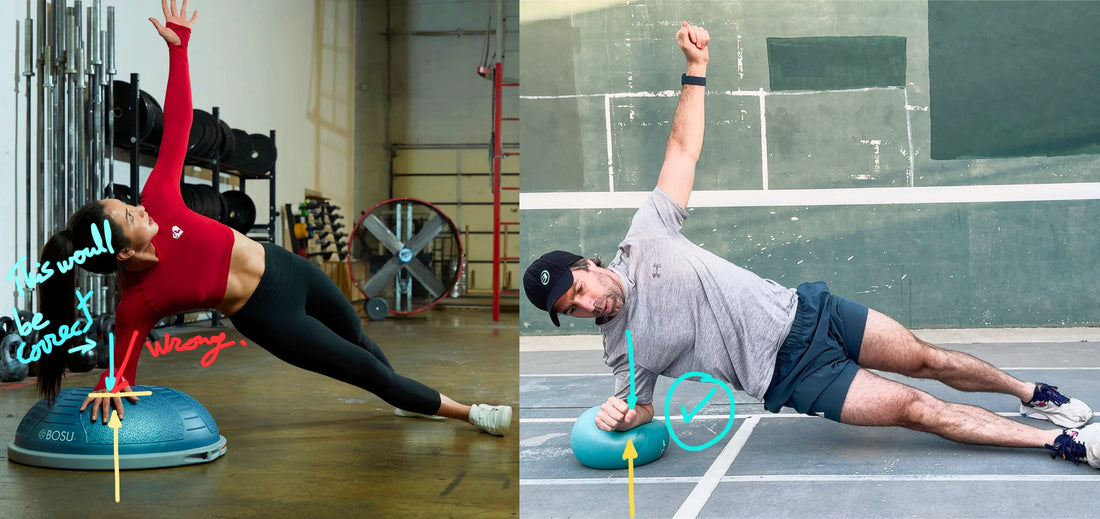
Logic Workouts VS Bosu ball, Swiss ball, Elastics
Share
You might have heard of BOSU balls, Swiss balls and elastics, but Logic workout is here to shake things up. Think of it like flying a fighter jet instead of a training plane. It's smaller, more unstable, and amplifies every movement, accelerating your core strength and balance gains.
- Design: A smaller, high-quality inflatable ball—creating “dynamic instability” because there's less surface area on the floor.
- Recruits stabilizer muscles, core, and prime movers simultaneously.
- The instability ensures no single muscle group can “hide.”
- Forces you to generate power under unpredictable conditions—if you explode upward in a push-up or a jump, you must still stabilize upon landing on the ball.
- Teaches complete bodily control under dynamic conditions, honing explosive strength and balance.
- Proprioceptive gains are critical for advanced skills like one-arm pull-ups or human flags. This level of coordination can't be matched by simply pulling on resistance bands.
- Elevates proprioception by creating a feedback loop: if your alignment is off, you instantly roll or slip.
- Forces your nervous system to fire rapidly, engaging stabilizers and core in ways bands typically don't
Bosu half ball
- Design: A half-sphere attached to a flat base.
- Stability: Provides mild “mobility” rather than true instability; it rocks slightly but doesn't roll away.
- Best For: Beginners or those looking for a moderate balance challenge in exercises like squats or push-ups.
Unlike a fitball, which immediately rolls or slips if your alignment is off, the BOSU allows users to force against its stable base, often leading to improper positioning and compensations that can go unnoticed.
- Design: A full inflatable sphere, typically 55–75 cm in diameter.
- Stability: Rolls away when pressed, requiring more balance control than a BOSU.
- Best For: Core and rehabilitation exercises. However, larger sizes can limit correct positioning and reduce the intensity of the balance challenge.
When the ball is too large, it provides less instability, allowing the user to remain relatively stable without engaging the deeper stabilizing muscles effectively. Unlike a smaller fitball, which demands precise control and alignment, an oversized Swiss ball can encourage poor posture and diminished muscle activation.
- Offer linear resistance that increases with the stretch.
- Useful for isolating or assisting certain muscles, or for light warm-up routines.
- Often used to add or reduce load in specific movements (e.g., assisted pull-ups).
- Primarily offer a single-directional force—pull, press, or hold.
- Effective for small-range rehab exercises or focused accessory work, but lack the multidirectional instability that simulates real-life movements.
While effective for controlled, small-range rehab exercises and targeted accessory work, elastic bands inherently increase stability due to their predictable resistance. Unlike tools that challenge multidirectional control, bands guide movement along a fixed path, which can limit the development of true functional stability and dynamic muscle engagement.
